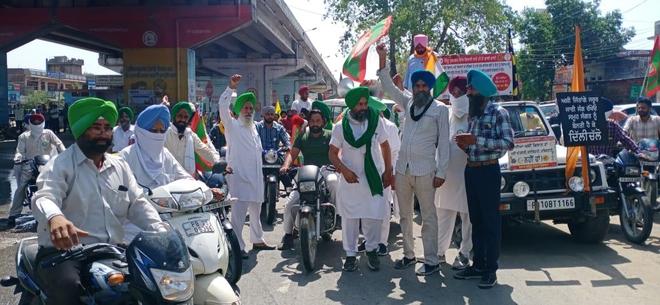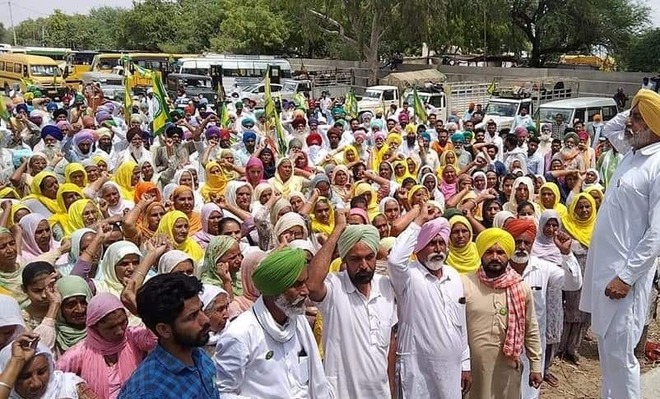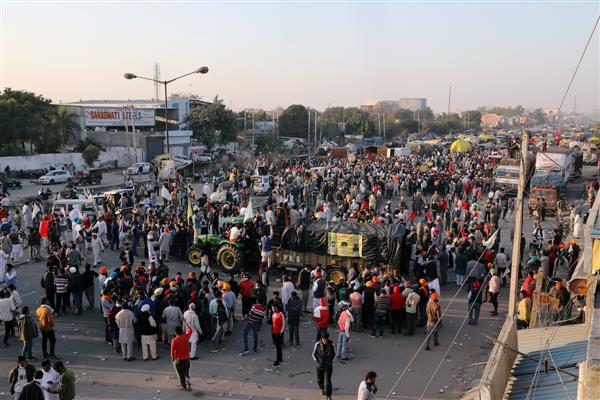Warn BJP leaders of backlash

SKM leaders take out a rally at Fatehgarh Sahib. Tribune photo
Our Correspondent
Fatehgarh Sahib, April 21
Leaders of the Samyukt Kisan Morcha today took out a motorcycle rally across the district, urging farmers who are done with the harvest to march towards Delhi in large numbers to strengthen the protest against the central agricultural laws and thwart any plans of the Centre to “forcibly evict farmers from Delhi borders”.
SKM leader Nirmal Singh Reona said due to the wheat harvest season, farmers had returned to their native villages, resulting in thin gathering at Delhi borders. He feared the Centre might forcibly evict protesters on the pretext of unprecedented surge in the Covid cvases.
He said as majority of farmers had harvested the crop, they had started organising motorcycle rallies in the district to mobilise farmers to reach Delhi borders to strengthen the stir. He said announcements in this regard were being made from village gurdwaras and sarpanches were being asked to mobilise farmers to reach Delhi at the earliest.
He warned the central government of dire consequences if they attempted to evict Delhi protesters.
He said BJP leaders and supporters wouldn’t be allowed to enter any village or to hold any activities in towns in the state.






































































